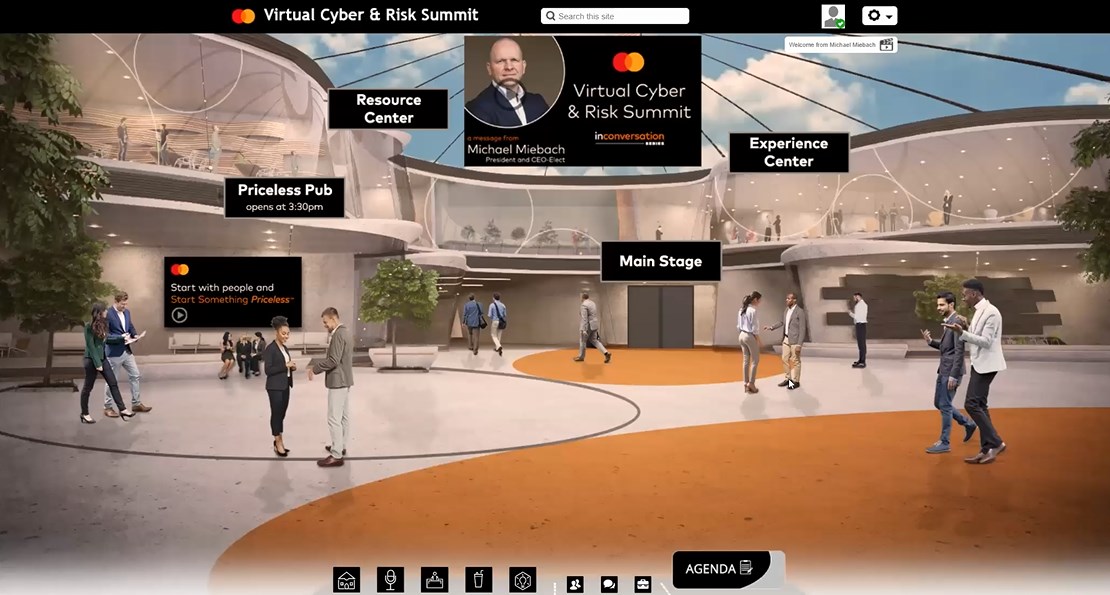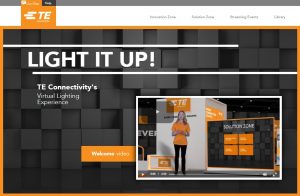Are Virtual Events a Good Idea for Your Business?
Before face-to-face events fell victim to the virus, virtual events – other than webinars – were of little interest to most companies. But now they’re big news and companies are wondering if and how to use them. So this post is intended to help explain the options available, and help you decide which, if any, are right for your business.
Ready?
First, if you’ve lost your face-to-face event or tradeshow program, don’t immediately assume the best way to replace it is with a virtual event or virtual tradeshow. Start by listing the likely business impacts of temporarily losing your face-to-face program. What business goals or KPIs are you going to miss hitting? What marketing strategies can you no longer implement? Your answers might include:
- Losing your best tools for sharing your latest product developments with key audiences – or educating your sales force and distribution network
- Losing a key source of new sales leads
- Missed opportunities to have meaningful, face-to-face interactions with key customers and employees
- Lost PR opportunities
- Losing your annual platform for recognizing and rewarding your best performers
- Or maybe missing the chance to reinforce your leadership position within your industry
After you do this exercise, look at each goal or missed opportunity and list alternative strategies you can use to achieve them. For instance:
- Maybe upping your PR program
- Building or strengthening your email, news and social media efforts
- Producing more content and sharing it digitally (or repackaging and sharing the content you already have)
- A clever direct mail program to get key news in front of your targets
- Boosting other components of your marketing mix
- A virtual event of some kind
If some kind of virtual event rises to the top of your list – or becomes something you at least want to explore in more depth – then go for it. Keep in mind that there are many types of live, digital interaction possibilities, and that available technologies allow you to bring almost any virtual idea you can think of to life. So, we strongly encourage creativity.
To help, we’ll describe three examples of virtual events and some of the options that can be included in each.
The Virtual Tradeshow
These typically begin with an interface that replicates the look and feel of entering a show venue (a “Virtual Hall”), or a specific exhibitor’s booth. They can be created by a particular show’s management team to replicate the whole show with individual exhibitors and sponsors getting a chance to buy “space.” Or more commonly, individual companies choose to create their own virtual booth which gives them greater control over timing, function, quality and their audience. In both cases the shows are often built by customizing pre-existing show and booth templates to save cost and programming time.
These typically try to mirror the same kind of choices visitors would have at a live show. Clicking on the image of a receptionist, for instance, launches an intro video. Picking a product path can open up its own set of product-specific virtual choices – including live or prerecorded product demos. Click on graphics or presentation screens in a virtual booth to open up a PDF or launch a slide show. Chat live with the exhibitor’s team. Or maybe enter and download content from a digital library. Sponsorship opportunities can also be built in to help subsidize your program.
Typically, these shows are scheduled to last a day or more like a real show, and once a live show is over it can be left online for people who missed it, or who want to see some part of it again. But keep in mind that anything live is a bigger draw than anything pre-recorded.
The Virtual Event
Here the goal is to recreate a face-to-face event – for instance – a sales meeting or some other kind of educational event. Visitors are offered an agenda of online experiences, sometimes with choices based on individual interests. For instance, such an event might open with a live broadcast of a general session starting with a dramatic video intro followed by a live keynote speaker. After this, visitors might be offered a choice of different panel discussions or breakout sessions – offering live interaction possibilities between presenters and audiences. Again, all of this can be augmented by other creative options like a live chat function throughout, a live awards presentation, an interactive game or contest that lets visitors compete for swag to be mailed post-event – even a post event Zoom-like hangout session allowing visitors to casually interact with each other and your team.
A recent MasterCard virtual event, whose interface (see below) we helped design, offered a lot of options like these – including a chance to enter the “Priceless Pub” where a professional mixologist did a live demo teaching people to mix two new drinks called a Priceless Perfection and a Risky Business. But only at 3:30 after the rest of the live events ended.
In terms of production quality and budget, live events can range from something as simple as a webinar to something that looks and feels more like an Academy Awards broadcast with multiple live presenters, demos, videos, even entertainment options streamed live in HD from different locations.
The Custom Hybrid
Maybe what you want to share doesn’t ‘shoe horn’ well into either of these two formats. In that case, no problem. Technology allows you to create almost any kind of virtual experience you can imagine. Here’s an example of one we helped create for TE Connectivity working with our partner Live Marketing.
With the big Spring LIGHTFAIR 2020 show cancelled, TE had lost its primary way of introducing its latest lighting products. More important they lost the opportunity to meet and collaborate on custom lighting solutions with the procurement people and lighting engineers who typically visit TE’s booth. So, we helped TE create “Light It Up” – a custom website that offered visitors a chance to take the same journey they would have in TE’s booth, but without the booth. Instead, it worked more like a website and offered customers:
- An introductory video explaining what’s available on the site to visitors and how to particpate
- The Innovation Zone – a browsable slide show of TE’s latest lighting product innovations (typically a major focus of their booth)
- The chance to register for and attend a live streaming event presenting TE’s solutions for building connected, city-wide street lighting networks
- A Solution Zone – offering a deep dive into a library of downloadable video and PDF product information
- An ongoing live chat function to encourage collaborative interaction
Maybe most important, TE didn’t just plan to use this once. They continue to schedule and offer live events through this site. This means, attendees get to know the site and can use it as an ongoing resource, and TE gets a continuing return on its initial investment. You can explore the site for yourself here.
Summary
We want to leave you with three last pieces of advice:
1. When choosing to participate in a virtual conference being put together by someone else, or choosing an existing show template to build your own virtual booth – make sure that what’s being offered in the way of functionality (e.g., customization, ability to give live presentations, collect visitor data, chat live with audiences) is consistent with your needs and goals.
2. Remember that no matter how thoughtfully a virtual event has been designed, it will not succeed without a strong promotional strategy to build awareness and drive attendance. Without the commitment of registration and travel costs you may also find it easier to attract an even larger audience than your in-person event, but also harder to get them to actually participate. That’s why TE’s promotional effort, for instance, involved a coordinated mix of social media, email and PR – plus a series of reminders – to both drive registration and then encourage signups to attend.
3. Just because you can doesn’t mean you should. After all, it’s really easy to click out of a virtual event to see what’s in the fridge. So before you take the time and money to participate in any kind of virtual event ask yourself what kind of experience you’ll be offering attendees? Is it something that will hold visitors’ interest. Will they find it valuable and recommend it to others? Will it give them a favorable impression of your company? And above all, is it likely to meet the goals you set for it? If you’re not sure about the answers, you might want to rethink your plans.
And remember we’re ready to help you with any stage of your virtual event strategy and production. For more on virtual events and how our customer Sony approached the 2020 CEDIA Expo when it went virtual go here.


